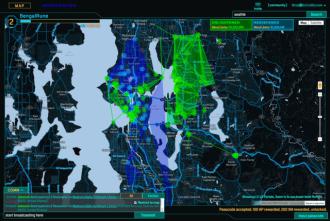
Jeff beckoned to a salesman in...
Jeff beckoned to a salesman in the department store, pointed to white wool designer dress on a mannequin that Eunice was admiring, and asked, "Excuse me young lady, how much is this dress?"
"That dress is £899.95, Sir," sneered the rather snotty saleswoman.
"£899.95? For £99.95 I could get the same dress at the Bargain store downtown!"
"But sir," said the saleswoman, "You'll find that the dress downtown is recycled wool. This original is 100% pure virgin wool."
Jeff says, "So? For £800 I should care what the lambs do at night?"
"That dress is £899.95, Sir," sneered the rather snotty saleswoman.
"£899.95? For £99.95 I could get the same dress at the Bargain store downtown!"
"But sir," said the saleswoman, "You'll find that the dress downtown is recycled wool. This original is 100% pure virgin wool."
Jeff says, "So? For £800 I should care what the lambs do at night?"

